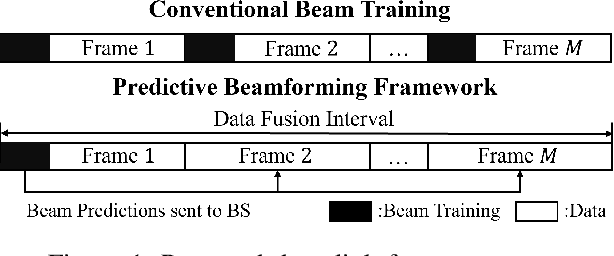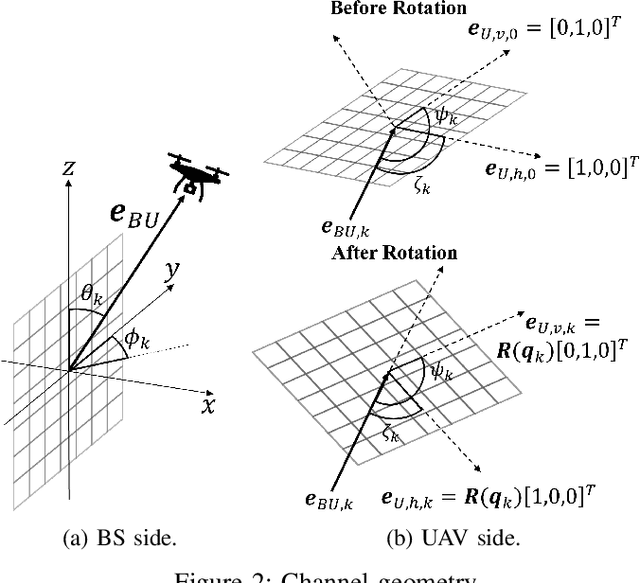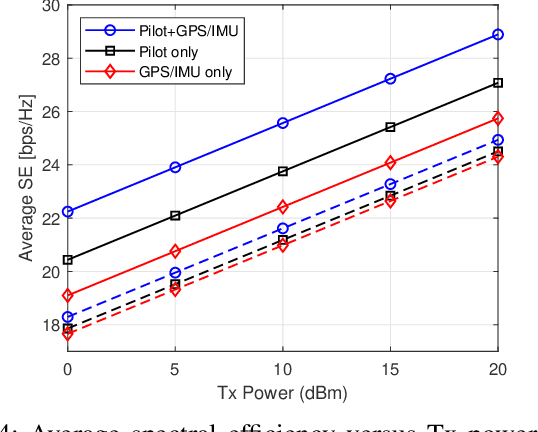David Love
Deep Learning Aided Broadcast Codes with Feedback
Oct 22, 2024



Abstract:Deep learning aided codes have been shown to improve code performance in feedback codes in high noise regimes due to the ability to leverage non-linearity in code design. In the additive white Gaussian broadcast channel (AWGN-BC), the addition of feedback may allow the capacity region to extend far beyond the capacity region of the channel without feedback, enabling higher data rates. On the other hand, there are limited deep-learning aided implementations of broadcast codes. In this work, we extend two classes of deep-learning assisted feedback codes to the AWGN-BC channel; the first being an RNN-based architecture and the second being a lightweight MLP-based architecture. Both codes are trained using a global model, and then they are trained using a more realistic vertical federated learning based framework. We first show that in most cases, using an AWGN-BC code outperforms a linear-based concatenated scheme. Second, we show in some regimes, the lightweight architecture far exceeds the RNN-based code, but in especially unreliable conditions, the RNN-based code dominates. The results show the promise of deep-learning aided broadcast codes in unreliable channels, and future research directions are discussed.
Constant Modulus Waveform Design with Interference Exploitation for DFRC Systems: A Block-Level Optimization Approach
Jun 27, 2024



Abstract:Dual-function radar-communication (DFRC) is a key enabler of location-based services for next-generation communication systems. In this paper, we investigate the problem of designing constant modulus waveforms for DFRC systems. For high-precision radar sensing, we consider joint optimization of the correlation properties and spatial beam pattern. For communication, we employ constructive interference-based block-level precoding (CI-BLP) to leverage distortion induced by multiuser multiple-input multiple-output (MU-MIMO) and radar transmission on a block level. We propose two solution algorithms based on the alternating direction method of multipliers (ADMM) and majorization-minimization (MM) principles, which are effective for small and large block sizes, respectively. The proposed ADMM-based solution decomposes the nonconvex formulated problem into multiple tractable subproblems, each of which admits a closed-form solution. To accelerate convergence of the MM-based solution, we propose an improved majorizing function that leverages a novel diagonal matrix structure. After majorization, we decompose the approximated problem into independent subproblems for parallelization, mitigating the complexity that increases with block size. We then evaluate the performance of the proposed algorithms through a series of numerical experiments. Simulation results demonstrate that the proposed methods can substantially enhance spatial/temporal sidelobe suppression through block-level optimization.
Data Fusion-Based Predictive Beamforming for Downlink UAV-Assisted Massive MIMO Communication
Sep 10, 2023



Abstract:In this letter, we propose a data fusion-based predictive beamforming scheme for unmanned aerial vehicle (UAV)-assisted massive multiple-input multiple-output (MIMO) communication, which involves a base station and UAV, each equipped with a massive MIMO array. We consider aircraft dynamics to track and predict the trajectory and orientation of the UAV. To improve communication and tracking performance, we propose a novel fusion of the channel and motion data of the UAV using an extended Kalman filter (EKF). Simulation results demonstrate that the proposed scheme can improve overall spectral efficiency, particularly when the number of antennas is large.
Robust Non-Linear Feedback Coding via Power-Constrained Deep Learning
Apr 25, 2023



Abstract:The design of codes for feedback-enabled communications has been a long-standing open problem. Recent research on non-linear, deep learning-based coding schemes have demonstrated significant improvements in communication reliability over linear codes, but are still vulnerable to the presence of forward and feedback noise over the channel. In this paper, we develop a new family of non-linear feedback codes that greatly enhance robustness to channel noise. Our autoencoder-based architecture is designed to learn codes based on consecutive blocks of bits, which obtains de-noising advantages over bit-by-bit processing to help overcome the physical separation between the encoder and decoder over a noisy channel. Moreover, we develop a power control layer at the encoder to explicitly incorporate hardware constraints into the learning optimization, and prove that the resulting average power constraint is satisfied asymptotically. Numerical experiments demonstrate that our scheme outperforms state-of-the-art feedback codes by wide margins over practical forward and feedback noise regimes, and provide information-theoretic insights on the behavior of our non-linear codes. Moreover, we observe that, in a long blocklength regime, canonical error correction codes are still preferable to feedback codes when the feedback noise becomes high.
 Add to Chrome
Add to Chrome Add to Firefox
Add to Firefox Add to Edge
Add to Edge